
Station Name: PORT GATE PLATFORM[Source: Nick Catford]
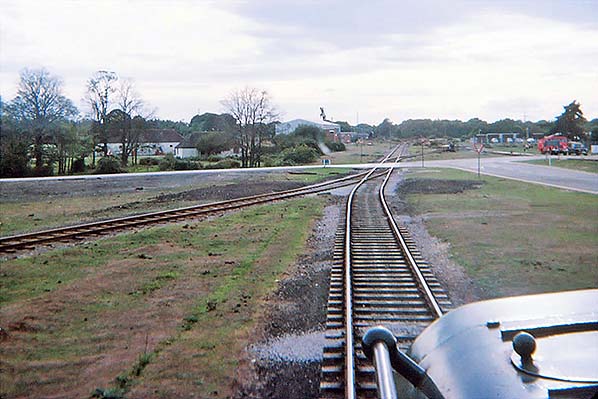 The view from the footplate of Ruston & Hornsby Army No.432 as she truddles along the Marchwood Military Railway towards Main Road crossing and Port Gate Halt in September 1975. In the centre distance can be seen the locomotive shed and behind it the raised jib of the breakdown crane. The halt is seen on the right just beyond the road. This is the original position of ther halt, it was later moved to to where the locomotive is standing.
Photo by Andy Crespin 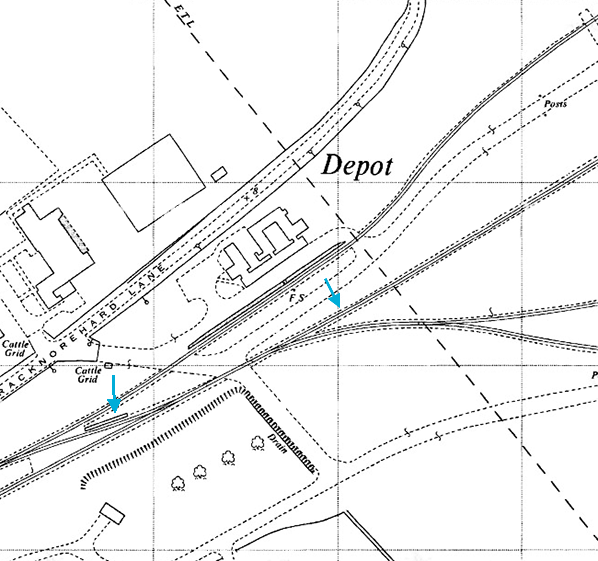
1965 1:2,500 OS map with the site of Port Gate Platform indicated. The original position of the halt is on the left. Some time after 1975 a new halt was provided to the east (second position). Apart from Model Room and the original Port Gate Halt none of the other halts on the Marchwood Military Railway have been shown on OS maps. The main entrance to the port off Cracknore Hard Lane is seen on the left. The halt was to serve people living in McMullan Barracks part of which is seen opposite the port entrance.
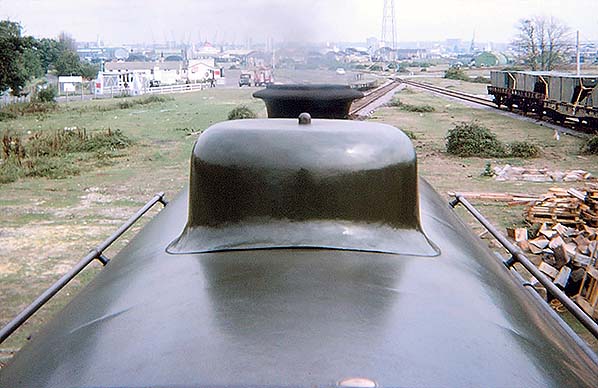 The view from, the photographer reports, the cab roof of Austerity saddle-tank Army No.92 WAGGONER in September 1975. Port Gate Halt can be seen to the right of the locomotive's chimney. The actual gate from which the halt took its name can be seen on the left. On the right, the loaded train comprises a mix of 4-wheel and bogie flat wagons. To the left of the halt stands a fire tender* and a Land Rover, the latter apparently with the full tilt canvas so familiar with the military. Given the date, the Land Rover could have been a Series IIA or Series III. The general scene is so typical of military railways; generally neatly maintained track with well-trodden grassed areas and pockets of shrubbery here and there. The cranes of Southampton Docks are visible in the far distance.
Photo by Andy Crespin 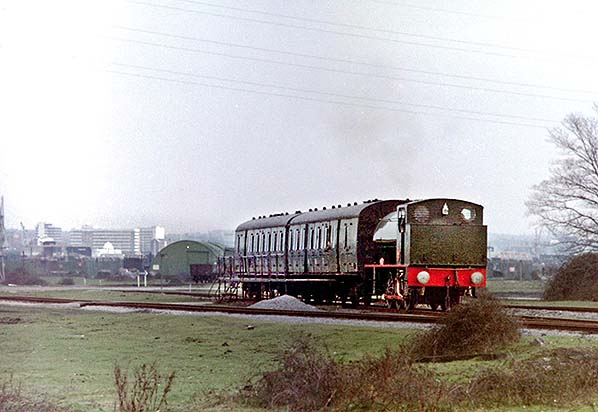 No.92 with the lunchtime passenger train at Port Gate Platform, a very rudimentary structure but one which no doubt served its purpose adequately, in February 1976. The train is formed of two of the ex-BR London Midland Region 57ft suburban coaches, both being brake-end vehicles. Slightly amusingly, No.92 carries a lamp in the position which on the main line would signify a local passenger train - which technically is what the Marchwood passenger service was. Southampton can be seen
in the background. Photo by John Graham and courtesy Andy Crespin 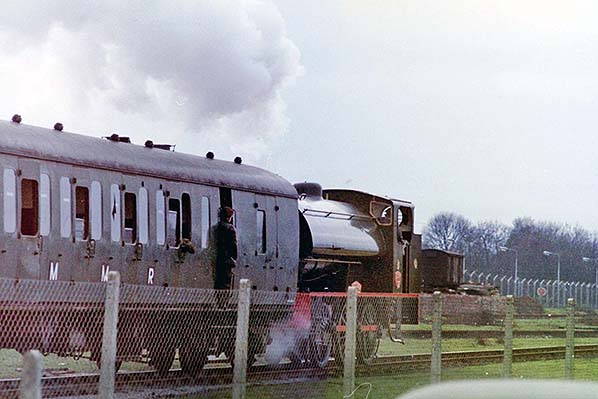 No.92 scuttles away from Port Gate Platform towards the Married Quarters with the lunchtime passenger train in February 1976, prior to the platform being relocated to the east side of the road. The train is formed of two of the ex-BR London Midland Region 57ft suburban coaches, both being brake-end vehicles and both branded MMR at this time with at least one, it is believed, having come to Marchwood via Longmoor. Note the van in the background; it appears not to be grounded but on the elevated track of the coaling stage.
Photo by John Graham and courtesy Andy Crespin 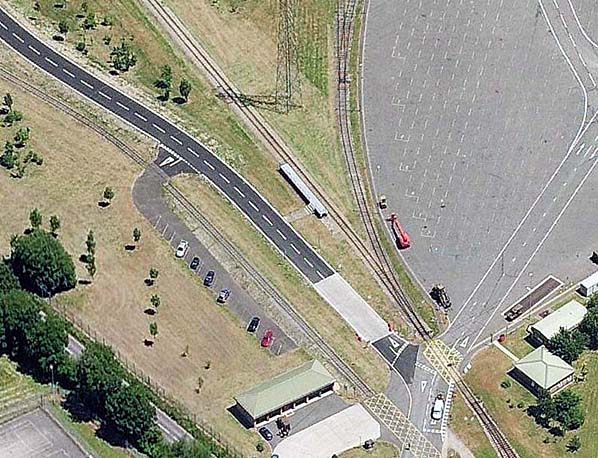 An aerial view of the second Port Gate Platform; the path from the road and steps up to the platform
are clearly seen platform2.jpg) Aerial view of Port Gate Platform in October 2015. Aerial view of Port Gate Platform in October 2015.
*This is a Green Goddess which has been repainted red from the standard green of these vehicles. Built upon the Bedford RLHZ, a variation of the Bedford RL chassis, the Green Goddess was a product of the Cold War and designed to pump large quantities of water from rivers, lakes etc., if necessary using several vehicles linked together, to counter the fires perceived at the time to be the result of nuclear attack. As such the Green Goddess was not a fire engine, or fire tender, in the accepted sense of the term but a 'Self-Propelled Pump' with direct firefighting by individual vehicles being a mere secondary function. Built from 1953, somewhere in the region of one thousand were built with the final examples appearing in 1964. Used by the Auxiliary Fire Service until disbanded in 1968, the Green Goddess became somewhat superfluous following the end of the Berlin Wall in 1989 and the subsequent collapse of communism in Eastern Europe (and with it the reduced Soviet threat). Nevertheless the British government held the Green Goddess in reserve until as late as 2004 and, crewed by the army, saw action during strikes by the civilian fire brigades with the last such occasion being in 2002. A large number were sold for use in developing countries, others were sold for use in industry while several others survive in preservation. Reliable and rugged, as were most Bedford vehicles but relatively slow and lumbering, by modern standards, the trump cards of the Green Goddess were its 4-wheel drive layout and high ground clearance making for a virtually all-terrain vehicle. The Fire and Rescue Services Act 2004 gave the government powers to compel civilian fire brigades to make their vehicles available to the military should the need arise. This and other contingencies were to see the end of the Green Goddess.
|

 Home Page
Home Page